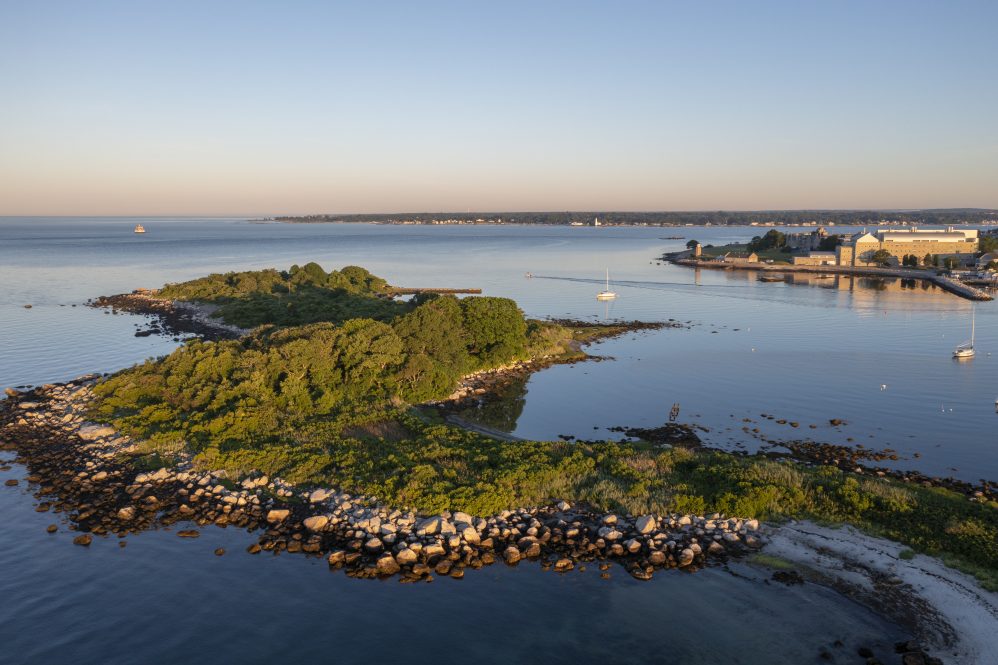Peter Auster, UConn Research Professor Emeritus of Marine Sciences and Senior Research Scientist at Mystic Aquarium, is one of 20 members on a new NOAA committee, the Marine and Coastal Area-based Management Advisory Committee.
Auster will bring his scientific expertise to the group, whose collective membership brings diverse knowledge and experience to advise agency leaders on scientifically- based approaches to area management, protection, and conservation of U.S. marine and Great Lakes regions. One effort where the committee will be integral is in advising NOAA on aspects of the America the Beautiful initiative.
Auster met with UConn Today to talk about the committee’s duties and the important role of scientists and other experts in helping shape policy decisions, especially in a time of fast-paced climate change.
Can you talk about the goals and duties of the Marine and Coastal Area-based Management Advisory Committee?
The Marine and Coastal Area-based Management Advisory Committee will produce advice for the Under Secretary of Commerce for Oceans and Atmosphere (who serves as the Administrator of the National Oceanic and Atmospheric Administration, or NOAA) on science-based approaches to area-based conservation, restoration, and management of coastal and marine areas of the United States. Our remit will also include the Great Lakes region.
The U.S. has multiple laws and agencies that address the conservation and management of our ocean spaces, each with different policy goals, such as sustainable fisheries or conservation of biological diversity. Each also uses different tools to reach its goals, including area-based measures such as year-round or seasonal closures, some are permanent and long-term while others are, by design, temporary.
Unfortunately, such approaches result in conflicts between stakeholder groups who use ocean space in different ways. For example, fishers and conservationists often have reciprocal responses to closure alternatives. Permanent area closures can exclude all commercial-scale fishing, maximizing the benefit to biodiversity conservation goals. Other closures allow some or all types of fishing but result in a range of direct human disturbances. How to address such trade-offs with the dueling goals of conservation and sustainable use of biodiversity will be the topic of our machinations.
The timing for the work of this committee could not be more opportune given the national and international commitments made to conserve 30% of lands and waters by the year 2030. Known in the vernacular as 30 x 30, this goal is central to President Biden’s “Restoring America the Beautiful” initiative, with goals to conserve biodiversity, use natural ecosystems to address climate change and address equity in access to our natural heritage for all citizens.
The stakes are high, but the tools for developing solutions are available. We just need to muster the political will to address the trade-offs. There will not be a one-size-fits-all approach. The strength of the committee will be the diversity of expertise and perspectives in its membership, including scientists, natural resource managers, commercial and recreational users, indigenous peoples, educators, and nonprofit organizations.
How does the advising or policy-making process work?
In one sense, the best part of asking for advice is you don't have to take it. For example, my wife sometimes asks for advice about the choice between two different dresses, I venture an opinion, and then she chooses the opposite (notable here is I admittedly am not a fount of fashion sense).
The challenge will be to put all the relevant evidence on the table, identify the gaps and uncertainties in our understanding, listen to the diverse perspectives from members representing different geographies, communities, and user groups, and then provide guidance to NOAA that is both user useful and user-friendly. We have yet to have our first meeting but the composition of the members (with staggered appointments, mine is for two years) will ensure a range of ideas that comport the disparate policy goals around the use and conservation of our public commons. My experience has been that people from opposite perspectives on an issue agree on many aspects of defining a problem and reasoned discussion narrows alternatives for developing a range of solutions.
What are you most excited about for this committee’s future?
This committee has the potential to address problems that have been difficult to deal with in other venues. Hopefully, the group develops a sense of trust, and we all work towards solutions that are in the best long-term interests of nature and people. Given the pace of climate change and biodiversity loss, we have no alternative but to work together towards a common purpose. If we can’t, I hope the nearby restaurants are pretty good.



